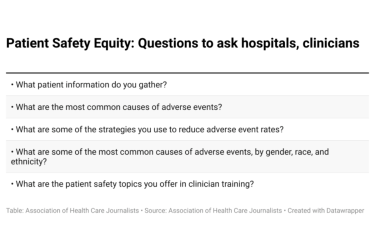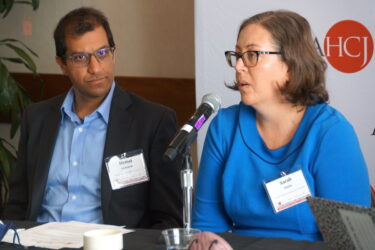
There was some good data analysis that turned personal for me last week, and I feel compelled to give a shout-out to the reporters and publications (Consumer Reports, CNN, Time) that covered the stunning rise in cesarean rates in the U.S. and revealed the enormous differences in C-section rates between hospitals.
This is really helpful stuff if you’re trying to find the best place to deliver a baby, as I’ve been for the past few weeks. And trust me, it’s no easy task.
I’m pregnant with my first child. As a health reporter, all the worries of pregnancy have been compounded by what I’ve long known about the health care system I’m up against.
The U.S. is a scary place to be expecting a baby. We spend more than any other country in the world on health care and more on childbirth related care – $86 billion annually – than on any other area of hospitalization, according to a 2011 editorial in the journal Contraception. Yet our maternal-fetal outcomes are some of the worst among developed nations.
If that’s not bad enough, for the last two decades or so, while the rest of the world reduced the number of mothers who died in childbirth by about a third, maternal mortality nearly doubled in the U.S. “Near misses”—instances where a woman has complications from childbirth so severe that she nearly dies—are up 27 percent here.
(For a detailed country-by-country breakdown of global maternal mortality trends, check out this incredible analysis published last week in the Lancet and sponsored by the Bill and Melinda Gates Foundation. The full text is free with media access to Science Direct – a benefit of AHCJ membership. Hat tip to Joe Rojas-Burke.)
C-sections are part of that picture. Since 1996, C-section rates in the U.S. have climbed 60 percent. And the biggest increase was seen in first-time moms, not in those having repeat C-sections. (Having one C-section increases the risk you’ll need another. So if you ask about C-section rates at your local hospital, as I did, you may be assured that a high number is largely because of repeat C-sections, but keep in mind the data don’t bear that out.)
And I don’t mean to be alarmist here. To be sure, there are instances when a C-section is the safest possible birth option. For example, surgical birth is usually required in a condition called placenta previa, when the placenta grows too low in the womb, blocking the baby’s exit.
And as the excellent Consumer Reports story points out, life-threatening complications with any kind of delivery are rare. But they are more common after C-sections.
According to a recent consensus statement by the American College of Obstetricians and Gynecologists (ACOG), there are about four deaths for every 100,000 women after vaginal deliveries and about 13 deaths for every 100,000 women after cesareans. Severe complications like bleeding and infections are also more common – experienced by about 8.6 percent of women after vaginal births and 9.2 percent after C-sections.
Then there were the personal stories I read from women who’d had cesareans. Many said the anesthesia left them barely conscious during the procedure. They felt the birth of their child happened without them. And there was the pain from the incision, which required a longer recovery than they’d anticipated and sometimes took months to subside.
No thanks, I thought.
Finding an obstetrician who feels the same kind of urgency about avoiding a C-section, though, has been harder.
Iit’s not any one doctor you have to worry about. Because obstetrical practices work on rotation, you never know who will be on call when you go into labor.
And you don’t just get the freedom to choose a doctor or practice you like. Because doctors are only credentialed to work in certain hospitals, you have to know where you want to deliver as much as which group you want to see. That’s a puzzle to solve with many more moving parts.
Georgia isn’t one of the 22 states covered in the new Consumer Reports hospital C-section rankings, but through my local chapter of the International Cesarean Awareness Network (ICAN), I was able to find out that the hospital closest to me, the one affiliated with the group of doctors I’d signed up with, has a C-section rate of about 40 percent. That’s higher than the national average.
Nationally, about a third of women now give birth by C-section, according to the American College of Obstetricians and Gynecologists. The World Health Organization says the C-section rate shouldn’t be higher than 10 percent to 15 percent. A hospital across town comes closer to that goal with a C-section rate of 17 percent.
I asked my doctor about that at my next visit. He was understanding but, instead of telling me that he, too, was concerned and that their group was working to reduce C-sections, he told me that if I needed one when the time came, I’d know it.
The only way I’d know, I thought, is if you told me it was. And I’d trust you on that because I’d have to.
No, it seemed to me the best time to improve my odds of avoiding a C-section was well before the pain, exhaustion and vulnerability of delivery.
And I liked that doctor. I even liked the practice. But, ultimately the numbers were tough to ignore.
I can only hope that by getting the numbers out there, health reporters are giving more women the ability to choose different and hopefully safer birth options.









